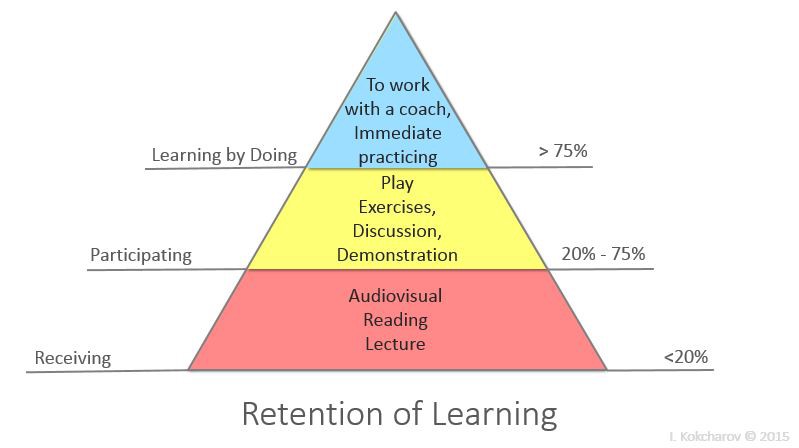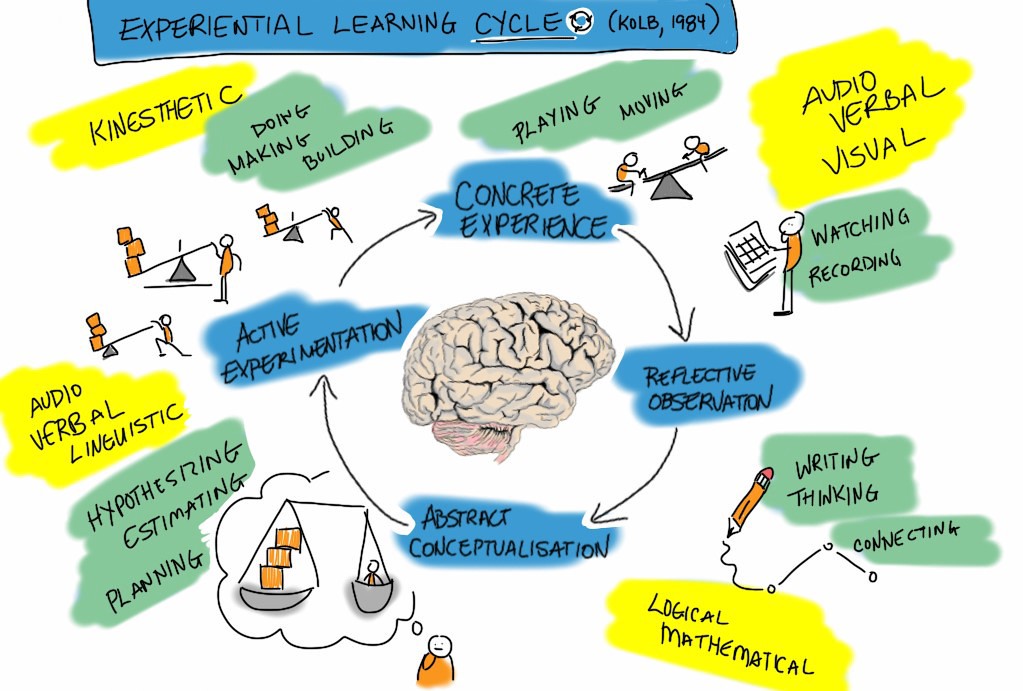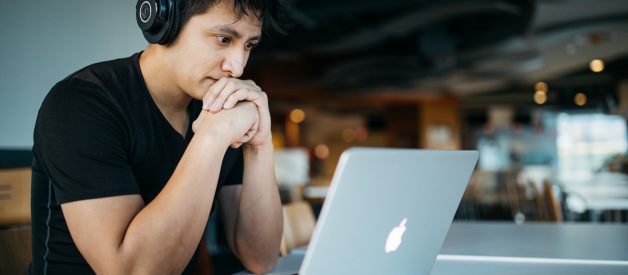Are You An Active Learner Or A Passive Learner?
 Photo by Wes Hicks on Unsplash
Photo by Wes Hicks on Unsplash
Let me ask you a question.
What did you learn yesterday?
Can?t remember?
Okay, then what did you learn today?
Are you still not sure?
Welcome to the trap of the age of information.
We?re blessed to have the opportunity to learn whatever we want at a click of a button. But it comes with its downside.
According to The Telegraph, we consume information equivalent to 174 newspapers a day in this age. While it may be different for everyone, it?s clear that we?re suffering from information overload. It impairs our ability to learn since our brains are not designed to process that amount of information every day.
It?s a sad reality, but most of us have become passive learners for that reason. And it?s not your fault.
When everything is a click away, your brain has become wired to forget and ignore all the information you learn. It doesn?t recognize the information as valuable so it lets the knowledge go in an hour or so.
As a result, we fool ourselves into thinking that we?re learning and growing. We develop fake confidence based on the information we can?t even recall.
The good news is that you can change the way you learn and become a master lifelong learner to achieve much more than you can imagine.
What Is Passive Learning?
Passive learning is the form of learning where the learner receives or internalizes the information without getting any feedback or practice. It?s a fast way to learn and requires the least amount of effort which is why it is the most common way to learn.
Sadly, this type of learning is also the worst because it dramatically reduces comprehension and a big chunk of learning goes to waste. It?s what you?ve seen all your childhood at school so you keep doing it without realizing the consequences.

What Is Active Learning?
Active learning is the form of learning where the learner actively participates to learn and get real-time feedback.
Unlike passive learning, active learning is not about passively reading, listening or watching to consume information. Active learning requires engagement, and that is why it?s rare. The true lifelong learners understand this principle, so they get the ?unfair? advantage to succeed in life.

Learning for active growth requires you to pick the right learning types according to your needs. I?ll cover 13 learning methods below, but some examples include the Richard Feynman technique, getting a coach, reflecting, tracking, brainstorming, note taking, recalling, practicing, etc.
Speaking of practice?
What Is Experiential Learning?
Experiential learning is the form of learning where the learner learns by doing and reflecting upon their performance. It?s a combination of practicing and reflecting forms of active learning. You go into the real world, get your hands dirty and learn from your experience.
David Kolb introduced his model of the experiential learning cycle as the following:

Experiential learning is the most natural form of learning because that?s what you did as a child. You observed and experienced the world and then your intelligence reflected upon the experience to make you better.
Now let?s discuss some of the best methods for learning.
13 Learning Methods To Turn Passive Learning Into Active Learning
The first step is to decide the best ways to learn which depends on your goal and the topic you want to learn. As explained in this study, it?s often best to mix and match the learning styles to find the perfect mix for you. Here are different learning methods to choose from:
1. Highlighting and Annotating
While reading, you can highlight, take notes, write your own comments and so on. When you do this, it becomes more of a two-way conversation instead of passive consumption.
2. Reflecting and Questioning
After learning, you can take some time to reflect on how you can apply the information into your life or ponder its meaning. You can also ask yourself good questions to extract the most out of your learning. ?What if?, ?How can I?, ?Why? questions are a few examples you can get started with.
3. Brainstorming and Ideating
Sometimes, it?s best to go wild and use your creativity to come with ideas about anything related to what you learn. To get started, make it part of your life to write ideas down. The more you practice, the more creative you become.
You may also create mind maps of the information you learn to ideate or distill everything down to the important takeaways.
4. Tracking and Game-Based Learning
This method is best when you?re applying a habit, trait, lesson, routine, and so on in your life. You can use pen and paper, an app or a spreadsheet to do it (depends on the complexity of the task).
If you want to take it even further, you can use gamification and set points, badges, rewards, competitions, etc. But keep in mind that gamification is not just about external motivators, you should also consider your intrinsic motivations to fall in love with learning.
5. The Feynman Technique
a) Pick a topic and study it
b) Explain it to a child or to someone unfamiliar with the topic in a simple language
c) Identify the gaps in your understanding when you fail to explain
d) Study the gaps again to understand better
e) Rinse and repeat until you grasp the topic well.
You may also call this technique an extension of teaching, explaining or summarizing.
6. Discussing and Peer Reviewing
Discussing a topic you learned with a group or a friend who is also knowledgeable about the topic would help deepen your understanding and may expose you to new information. You can also find an online community of people interested in the same topic and get support, accountability, help, and so on as added bonuses.
A similar way to learn is to do peer reviews within your group where you evaluate each other and give feedback.
7. Hiring A Coach and Deliberate Practicing
A coach or a mentor can help you fast track your learning because they can give you instant feedback to help you correct your mistakes. A coach can help you correct what could take you years to correct.
Coaches can also turn your traditional practice into deliberate practice. Deliberate practice is about having a system and purpose behind the hours you spend practicing. Instead of mindless repetition, it is about a focused effort on improving performance and skills with each repetition.
8. Experiential Learning
As I explained earlier in the article, experiential learning is about getting out there in the real world and adopt a ?ready, fire, aim? philosophy as opposed to the ?ready, aim, fire? technique. A lot of times, you need wisdom from your own experiences that you can?t get from reading books or listening to someone lecturing you.
So don?t wait until you?ve gathered all the information out there. Instead, step into the real world without having complete knowledge and learn from your experience through constant reflection and feedback.
9. Repeated Exposure
Due to the complexity of a topic or the passion you have for it, you may want to learn more about a topic no matter how much you learn. For those, repeated exposure from different perspectives is the best way to learn and expand your knowledge.
However, this doesn?t mean you can be passive about learning these subjects. As you become better, think about how you can learn more in depth to master the topic.
10. Just In Time Learning
Just in time learning is about learning the topics that are relevant at the current time in your life. For example, if you?re starting a business, you?d learn a ton about it in that phase of your life.
You could also save chunks of information for later and organize what you know you?ll need later. Building an archive of your own would let you access the information with ease.
11. Interleaving Learning
Interleaving technique is about learning multiple topics simultaneously. It will not only help you cover many subjects at once, but you?ll be able to connect different ideas from various disciplines while getting more creative as you build strong pathways in your brain.
As an example, if you dedicate 1 hour of learning a day, you could divide it into three 20-minute sessions and learn a different topic in each session. It?s a nifty way to keep your brain engaged and have an organized learning system at the same time.
12. Active Recalling
Active recall is a method that helps you memorize a topic by transferring the information from the short-term memory to the long-term memory. The best system to practice it is the Spaced Repetition System (SRS).
Spaced repetition is the time and tested method to transfer thoughts, lessons, practice to your subconscious mind. In this, you take the same facts you once learned and put it in a system that helps you recall the information.
It is much better than cramming loads of information in one go and believing you remember everything about the topic. Because more often than not, you?ll forget most of the things you learn that way.
One of the best ways to practice spaced repetition and active recall is to use flashcards. The question goes on one side and the answer goes on the other side of the flashcard. It lets you remember the answer to a question and when you use it enough times at regular intervals, your brain treats that as important information. Then, it goes to your long-term memory so you can recall it with ease.
The most famous flashcard software is Anki, but you can also use online tools like Quizlet or Brainscape to create your flashcards.
13. Testing and Evaluating Yourself
The last piece of the puzzle is to test yourself. It has a unique value that you can?t get from simply learning or practicing.
You need discipline and courage to admit what you don?t understand or what you find hard to do. Ignoring those things would be one of the worst mistakes a learner can make. Because you need to have a strong foundation before you move on to an advanced level.
So when you?re self-learning, you must take an extra step to evaluate yourself so you can learn better and grow faster. This is how you?ll find your strong and weak points so you know what to focus on.
Conclusion
Learning a subject or skill is an art. You could easily fool yourself by learning passively most of the time. That?s where the above learning methods come in to help you become better at the art of learning. Mix and match these methods based on the skill or subject you want to learn.
When you know how to learn, you learn the most in less time. Those who can master the art of learning will continue to thrive as it?s one of the key survival skills of the 21st century. The question is ? will you be the one to thrive or die? Will you be the one to grow or stagnate? Will you be the one to succeed or resent others?
So let?s stop the passiveness and take action right now. To put everything into a plan, download your personal development planning template by entering your information below. I?ll send it to you for free right away.
Originally published at DesignEpicLife.com

If you want to be prepared for a better tomorrow, then SkillUp! Follow us here and check out SkillUp Academy!


